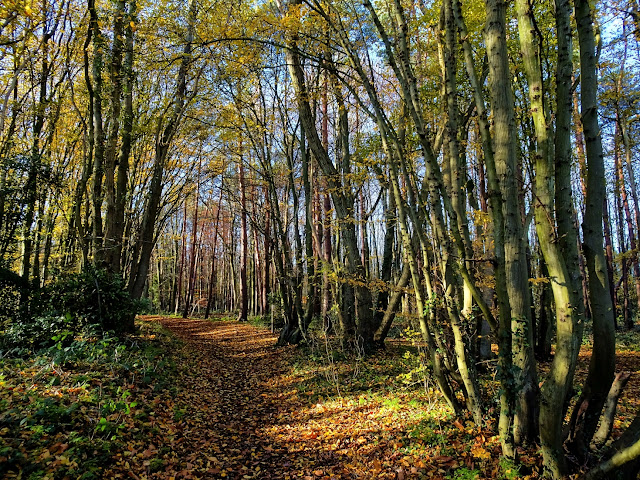The South Eastern Railway Company received authority to build the railway line from Maidstone to Strood in 1853, with Cuxton Station opening on the 18th June 1856. A party as held in Station Meadow behind the White Hart to celebrate the event.
The station was built on land owned by Lord Darnley, who apparently had the right to stop any train should he wish to board it.
 |
| Cuxton Station c.1860. The Station Master is on the platform, wearing a top hat... |
The design of the station clearly reflects Lord Darnley’s influence, with its intricate leaded windows and characteristically ornate chimneys.
 |
| The gravestone of Cuxton's first Station Master, James Hyde... |
The role of Station Master was once a highly prestigious one within the local community.
Since the above picture was taken in 1972, the gravestone has toppled over and broken. It still lies in the churchyard, by the path that leads up to the gate onto Six Acres.
 |
| Cuxton Station, c.1870... |
The unusual double-armed signal and ground frame in the picture above were latterly replaced by the current signal box.
 |
| Cuxton Station, 1914... |
On the platform in the above picture are Francis Cook (son of Edwin Cook, then the Station
Master), Ethel Cook (his daughter) and their friend Lily Peters. The elegant
oil lamps were kept topped up by the Station Porters.
 |
| Cuxton signal box, c.1910... |
The staff of the station at this time comprised the Station Master, two clerks, two signalmen and two porters. The 24 hour day was divided into two shifts. There were also porter-signalmen to help out if needed. Each station also had a plate-layer or lengthsman who maintained the track.
 |
| Members of Cuxton FC, Good Friday 1908... |
Cuxton FC used to play their matches on Station Meadow, which used to be behind the White Hart where Hillcrest Drive is now. Pictured above are the “Old Crocks”, who played the “Junior Swifts” in an old'uns versus young'uns match: unfortunately I don't know the result!
The station can be seen in the background on the right.
Pictured above are a push-pull unit, two coaches and a tank loco leaving Cuxton for Maidstone, in the days of Southern Railway before electrification.
Mr. Besant, a boat builder, lived in the house on the right which later became the "Besto" office.
 |
| Cuxton Station building, c.1960... |
 |
| Cuxton Station, c.1960... |
Today I ventured down to the station to take pictures of things as they are now, as Christmas Day is the only day when trains aren't running and the signal box is unmanned...
 |
| Cuxton signal box, 2022... |
The signal box is still the one featured in the picture from 1910, and it seems as if that was the last time it got painted. The signalling for this stretch of line is still not automated and thus signalmen man the box 24 hours a day, every day except Christmas Day.
 |
| Cuxton station building, 2022... |
 |
| Cuxton station 2022, taken from the same place as the view from 1914 above... |
Why are are our local stations so run down and shabby? In the early 1900s, Cuxton railway station was staffed with a dozen or so people. Now, in these modern and wondrous times, no-one runs it at all and the building sits there, boarded up, unloved and uncared for. How can that be called "progress"?
































